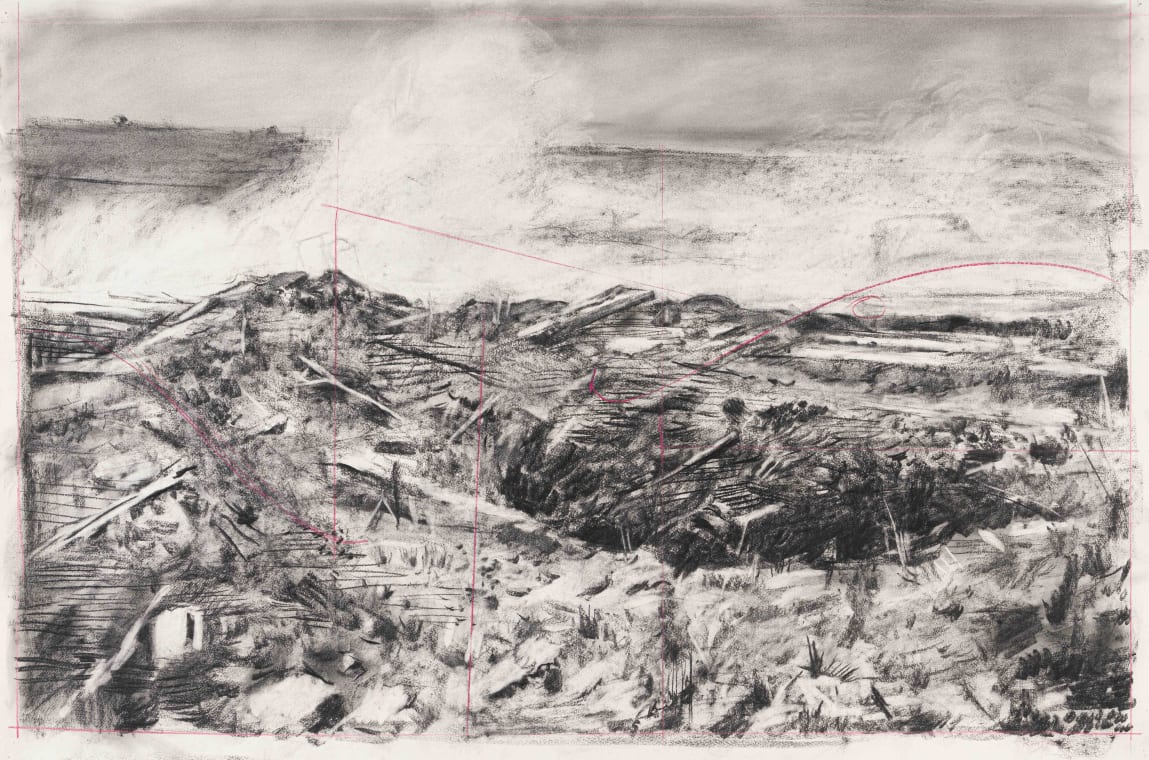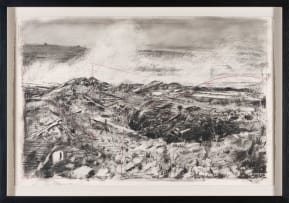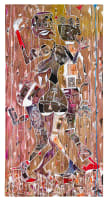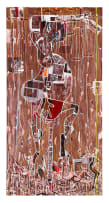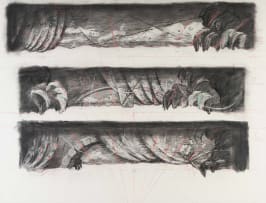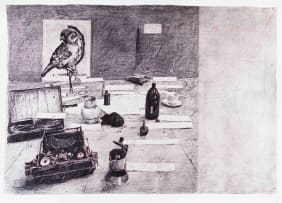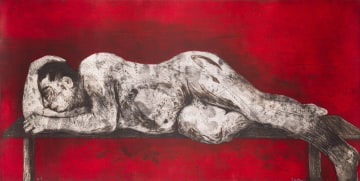WWI (Zeno Writing)
William Kentridge
About this Item
signed
Notes
Zeno Writing is an 11-minute film combining William Kentridge's studio-made charcoal and pastel drawings with contemporary and archival film footage. It was made in conjunction with Confessions of Zeno, a theatrical multimedia performance commissioned by curator Okwui Enwezor for the German art quinquennial Documenta 11 (2002). The film is loosely based on Italo Svevo's novel Zeno's Conscience (1923), which presents as a fictional memoir detailing the personal circumstances of Trieste businessman Zeno Cosini, a smoker and procrastinator undergoing psychoanalysis. The novel is set against the backdrop of WWI. Kentridge first read Svevo's novel in the 1980s. '[O]ne of the things that drew me to it was the evocation of Trieste as a rather desperate provincial city at the edge of an empire - away from the centre, the real world,' explained Kentridge years later. 'I was intrigued how an Austrian Italian writing in the 1920s could have such a sense of how it felt to be in Johannesburg in the 1980s. In the years following, this has persisted. And caused me to return to the book.'1 Kentridge's film is a loose evocation - rather than a faithful adaptation - of Svevo's meandering, stream-of-consciousness novel.2 In addition to the richly detailed and iterated charcoal drawings that form the basis of all Kentridge's stop-animation films, Zeno Writing includes film footage of shadow puppets, a Habsburg wedding and scenes of conflict from WWI. It ends with this drawing of a deteriorated landscape still smoking from battle. Exhibited with Zeno Writing at Goodman Gallery in 2003, the drawing is stylistically similar to Colonial Landscapes (1996), a suite of charcoal drawings and monoprints depicting uninhabited African landscapes, each with an overlay of red pastel lines. After returning to drawing in the mid 1980s, Kentridge made the genre of landscape a central part of his artistic output. 'I started calling myself an artist in my thirties when I discovered not just the necessity but the pleasure of drawing the landscape just to the south of Johannesburg, to the south of the leafy suburb I lived in. And also when I discovered the pleasure of a soft chamois leather dipped into charcoal dust and wiped across the white surface of the paper, leaving not just a train of dark charcoal grit on the paper but also of a darkening sky above a light horizon.'3 This work, which conflates historical truth and literary fiction, is an important example in Kentridge's analytic use of the landscape genre to comment on history and conflict.
1 William Kentridge (2004) William Kentridge, Milan, Skira Editore S.p.A. Page 172
2 Jordis Lau (2021) Appropriations of Literary Modernism in Media Art, Berlin, De Gruyter Page 110
3 William Kentridge & Jane Taylor (2018) That Which We Do Not Remember, Sydney, Naomi Milgrom Foundation. Page 102
Exhibited
Goodman Gallery, Zeno Writing, 1-29 March 2003.
Literature
Sean O'Toole (2003) Review Zeno Writing, Artthrob, Issue No 67, March: https://artthrob.co.za/03mar/reviews/goodman.html.
